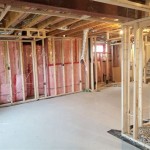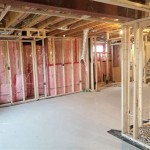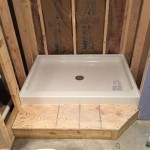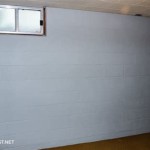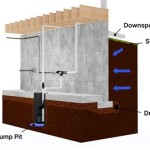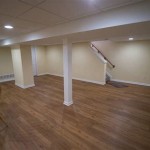Concrete Forms For Basement Walls: Essential Considerations
Concrete forms play a crucial role in basement wall construction, as they define the shape and dimensions of the walls. Choosing and using the right forms is essential to ensure structural integrity, durability, and ease of placement. ### Types of Concrete Forms There are two main types of concrete forms used for basement walls:1. Wood Forms:
* Traditional and widely used * Made from plywood or lumber * Require bracing and reinforcement * Can be custom-sized for specific applications2. Metal Forms:
* Durable and reusable * Made from aluminum or steel * Offer precision and faster installation * Can be more expensive than wood forms ### Selecting the Right Concrete Forms Choosing the appropriate concrete forms depends on several factors: *Project size:
Larger projects may benefit from metal forms due to their durability and faster setup. *Budget:
Metal forms can be more expensive than wood forms, so consider the cost-benefit ratio. *Time constraints:
Metal forms offer time savings due to their ease of installation. *Labor availability:
If skilled labor is scarce, consider metal forms for their ease of handling and assembly. ### Installation and Pouring Proper installation and pouring of concrete into the forms are crucial for successful basement wall construction:1. Installation:
* Layout and secure the forms to create the outline of the walls. * Use bracing and reinforcement to prevent bowing or collapse. * Ensure the form surfaces are clean and sealed to prevent leakage.2. Pouring:
* Use a concrete mix designed for below-grade applications. * Place the concrete carefully to avoid segregation or voids. * Vibrate the concrete to remove air pockets and ensure proper bonding. * Level and finish the concrete surface to create a smooth and durable wall. ### Curing and Removal Once the concrete is poured, it must be cured properly to gain strength.Curing:
* Keep the concrete moist for 7-14 days to prevent cracking. * Use curing blankets, water foggers, or plastic sheeting to maintain moisture levels.Removal:
* Wait 24-48 hours before removing the forms. * Remove the forms carefully using a pry bar or wedges. * Inspect the concrete walls for any damage or honeycombing. ### Advantages of Proper Concrete Forms Using proper concrete forms for basement walls offers numerous advantages: *Structural integrity:
Strong and durable forms ensure the walls can withstand earth pressures and loads. *Accuracy:
Forms provide precise dimensions for accurate wall construction. *Ease of installation:
Well-designed forms can be installed quickly and efficiently. *Cost savings:
Using the right forms can reduce labor and material costs. *Energy efficiency:
Properly poured concrete walls can minimize heat loss and improve energy efficiency.
Forming And Placing Concrete For The Garage Fine Homebuilding

Setting The Basement Wall Forms Icf Matt Cremona

How To Form A Homemade Concrete Wall Hunker Walls Diy Retaining

Concrete Construction With Aluminum Forming Systems

How To Form Tall Foundation Walls Youtube

Why Use Insulated Concrete Forms For Basements Nexcem And The Us

Icf Foundation Pros And Cons

Concrete Forms Types And Selection Of The Constructor
Icf Basements 101 How To Build An Insulated Concrete Forms Fox Blocks

How To Waterproof Insulated Concrete Formwork Dry Direct

